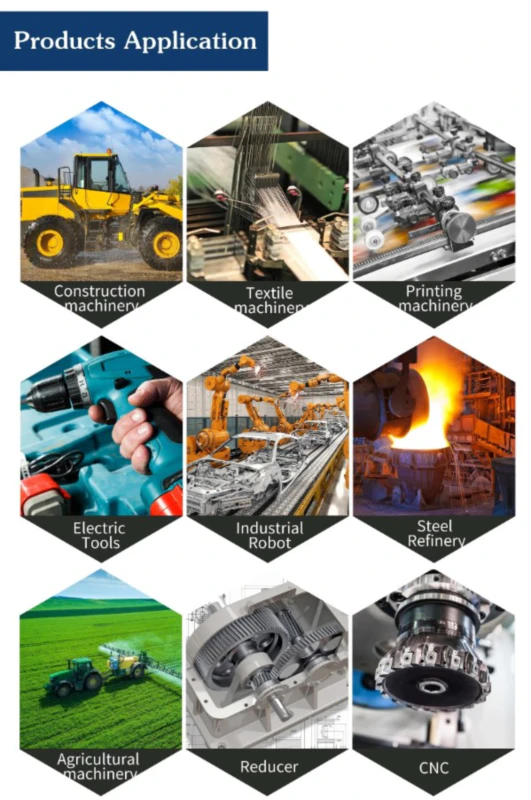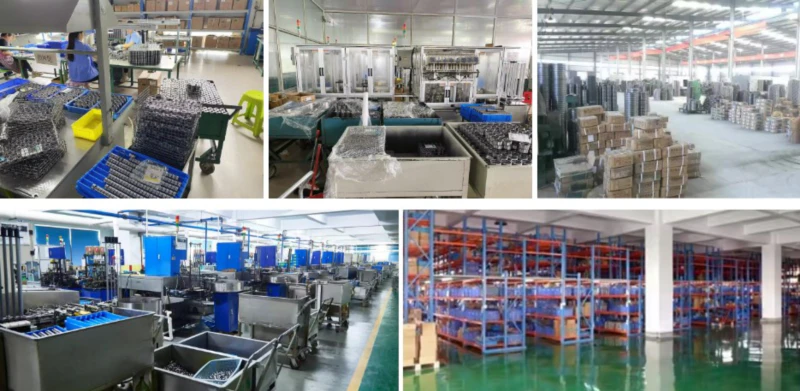Track Bearings and Bearing Cages – A Comprehensive Guide
In the world of industrial machinery, track bearings and bearing cages play a crucial role in ensuring smooth and efficient operations. These components are essential for the proper functioning of various types of equipment, from conveyor belts to heavy machinery. In this article, we will delve into the intricacies of track bearings and bearing cages, exploring their functions, types, and applications.
1. Understanding Track Bearings
Track bearings, also known as track rollers or cam followers, are specialized bearings designed to withstand heavy loads and operate in challenging environments. These bearings are commonly used in applications where linear motion is required, such as in track systems, conveyor belts, and material handling equipment.
1.1 Types of Track Bearings
There are several types of track bearings available, each designed to meet specific requirements:
- 1.1.1 Stud Type Track Bearings
- 1.1.2 Yoke Type Track Bearings
- 1.1.3 Cam Follower Track Bearings
Stud type track bearings consist of an outer ring, a stud, and a roller set. These bearings are highly versatile and capable of handling both radial and axial loads.
Yoke type track bearings feature an inner ring with a stud that extends on both sides. These bearings are known for their high load-carrying capacity and are commonly used in heavy-duty applications.
Cam follower track bearings have a stud or a bolt for mounting purposes. They are designed to follow cam profiles and are widely used in applications such as printing presses, textile machinery, and packaging machinery.
1.2 Functions of Track Bearings
Track bearings serve several important functions in industrial applications:
- 1.2.1 Load Support
- 1.2.2 Alignment
- 1.2.3 Friction Reduction
Track bearings are designed to support heavy loads and provide smooth linear motion in various equipment.
These bearings help maintain proper alignment between the track and the machinery, reducing wear and tear.
Track bearings minimize friction and ensure smooth operation, thereby increasing the longevity of the equipment.
2. Bearing Cages – Enhancing Bearing Performance
Bearing cages, also referred to as bearing retainers, are components that hold the rolling elements within a bearing. These structures are crucial for maintaining proper spacing and alignment, ensuring optimal performance and durability of the bearing assembly. Let’s explore the various aspects of bearing cages:
2.1 Types of Bearing Cages
There are different types of bearing cages available, each with its unique advantages:
- 2.1.1 Solid Cages
- 2.1.2 Split Cages
- 2.1.3 Crowned Cages
Solid cages are made from a single piece of material and provide excellent strength and rigidity to the bearing assembly.
Split cages consist of two or more pieces, allowing easy assembly and disassembly of the bearing. They are commonly used in applications where maintenance and replacement are frequent.
Crowned cages have a spherical or crowned shape, which helps distribute the load evenly among the rolling elements, reducing friction and wear.
2.2 Benefits of Bearing Cages
Bearing cages offer several advantages in terms of bearing performance and longevity:
- 2.2.1 Enhanced Lubrication
- 2.2.2 Reduced Noise and Vibration
- 2.2.3 Increased Bearing Life
The presence of a cage allows better distribution of lubrication, ensuring smooth operation and minimizing the risk of overheating.
Bearing cages help dampen noise and vibration, resulting in quieter and more stable equipment operation.
Cages prevent direct contact between rolling elements, reducing friction and extending the overall lifespan of the bearing.
3. Applications of Track Bearings and Bearing Cages
Track bearings and bearing cages find applications in various industries and equipment, including:
- 3.1 Material Handling
- 3.2 Construction Machinery
- 3.3 Printing and Packaging
Conveyor belts, forklifts, and overhead cranes rely on track bearings and bearing cages for smooth and efficient movement of goods.
Excavators, bulldozers, and loaders utilize these components to handle heavy loads and navigate challenging terrains.
Printing presses, packaging machines, and labeling systems rely on track bearings and bearing cages for precise and reliable motion control.

Conclusion
In conclusion, track bearings and bearing cages are essential components in various industrial applications. Their ability to support heavy loads, ensure smooth motion, and enhance bearing performance makes them indispensable in the world of machinery. As a leading company in the Chinese reducer market, we specialize in providing high-quality track bearings, bearing cages, and a wide range of other products. With state-of-the-art manufacturing facilities and a commitment to customer satisfaction, we strive to deliver superior products tailored to our customers’ specific needs. Contact us today to experience our exceptional products, competitive prices, and attentive service.

Author: Czh
Disclaimer: The information provided in this article is for informational purposes only. The author and the company do not assume any liability for the accuracy or completeness of the content. Readers are advised to consult professionals for specific advice related to their individual needs and requirements.